These artificial snowdrifts protect seal pups from climate change
The human-built habitats shield the pups from predators and the freezing cold, but they’re threatened by global temperature rise.
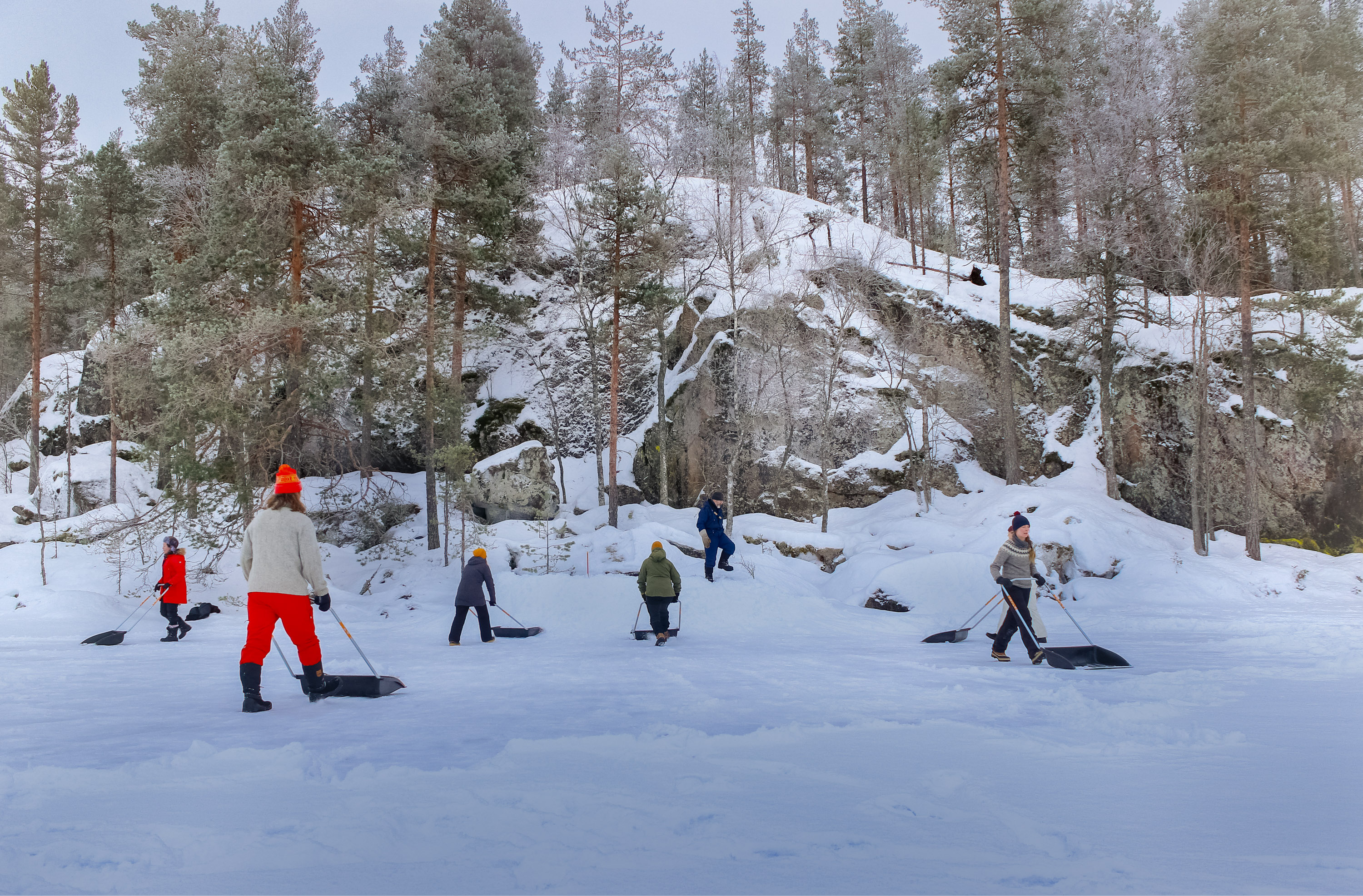
Just before 10 a.m., hydrobiologist Jari Ilmonen and his team of six step out across a flat, half-mile-wide disk of snow and ice. For half the year this vast clearing is open water, the tip of one arm of the labyrinthine Lake Saimaa, Finland’s biggest lake, which reaches almost to Russia’s western border. As each snow boot lands, there’s a burst of static, like the spine-tingling scrape of a freezer drawer closing. “It’s a poor amount of snow,” complains Ilmonen, who sees less than half the 20 centimeters (eight inches) he’d hope for in mid-January.
To reach their destination, one of the roughly 14,000 islands that poke out from the lake’s frozen surface, the team must walk for almost an hour in temperatures of −17 °C (1.4 °F). Ilmonen pays close attention to the snow underfoot because today it will be the material from which they construct lifesaving shelters for the Saimaa ringed seal, one of the world’s most endangered seals.
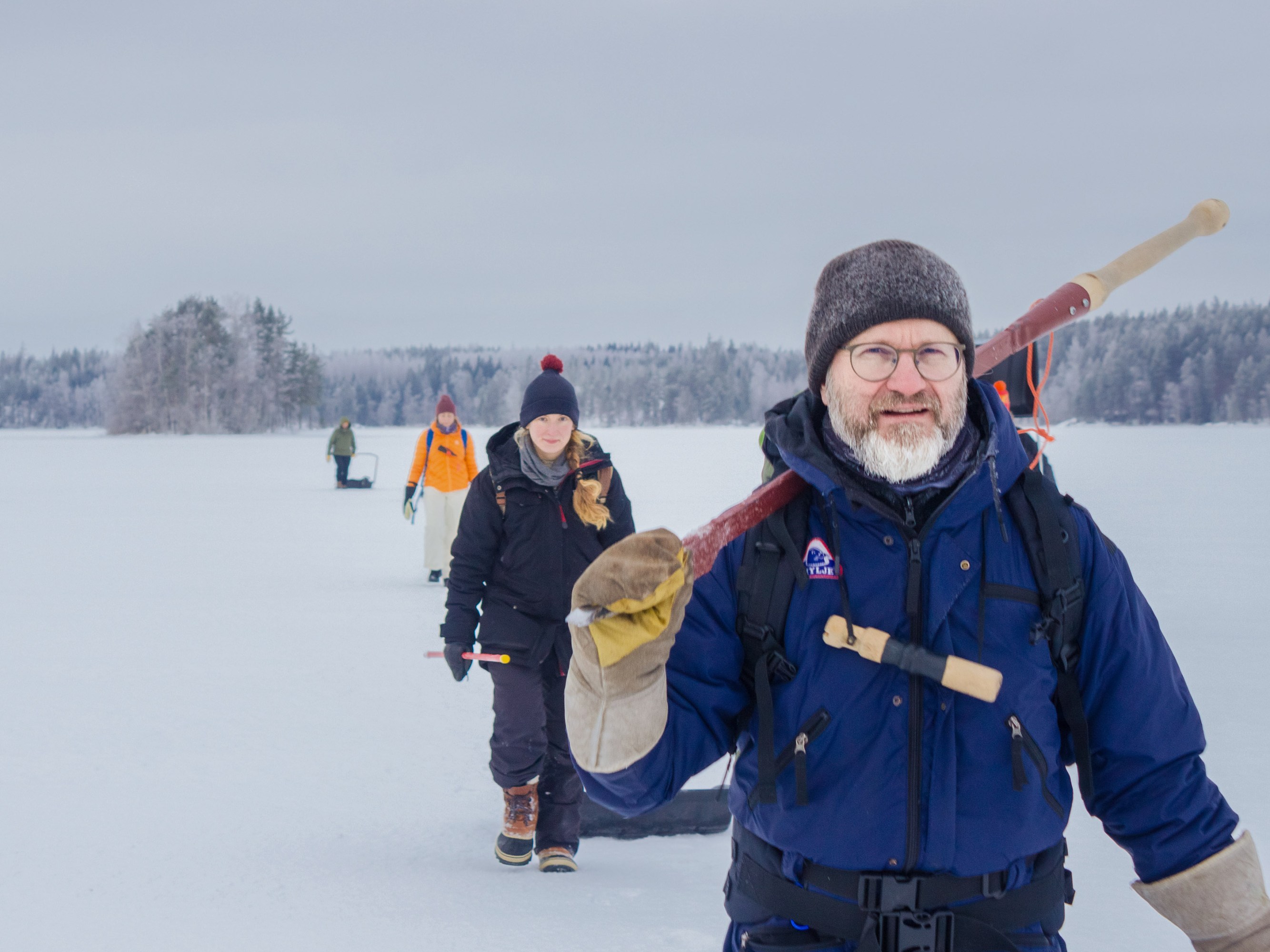
One key question brings volunteers out in these icy conditions: How will an animal that’s born inside a grotto of snow survive on a warming planet? For millennia, during Saimaa’s blistering winters, wind drove snow into meters-high snowbanks along the lake’s shoreline, offering prime real estate from which these seals carved cave-like dens to shelter from the elements and raise newborns. But in recent decades, these snowdrifts have failed to form in sufficient numbers, as climate change has brought warming temperatures and rain in place of snow.
For the last 11 years, humans have stepped in to construct for these animals what nature can no longer reliably provide.
For the last 11 years, humans have stepped in to construct what nature can no longer reliably provide. Human-made snowdrifts, built using handheld snowplows to mimic the actions of strong winds, are the latest in a raft of measures that have brought Saimaa’s seals back from the brink of extinction, following curbs on hunting and industrial pollution, and seasonal bans on fishing with gill nets. Now the seal population is rebounding, from lows of 100 or so in the 1980s to about 400 today. Some 320 pups—half of all Saimaa ringed seals born since 2014—took their first breath inside these shelters.
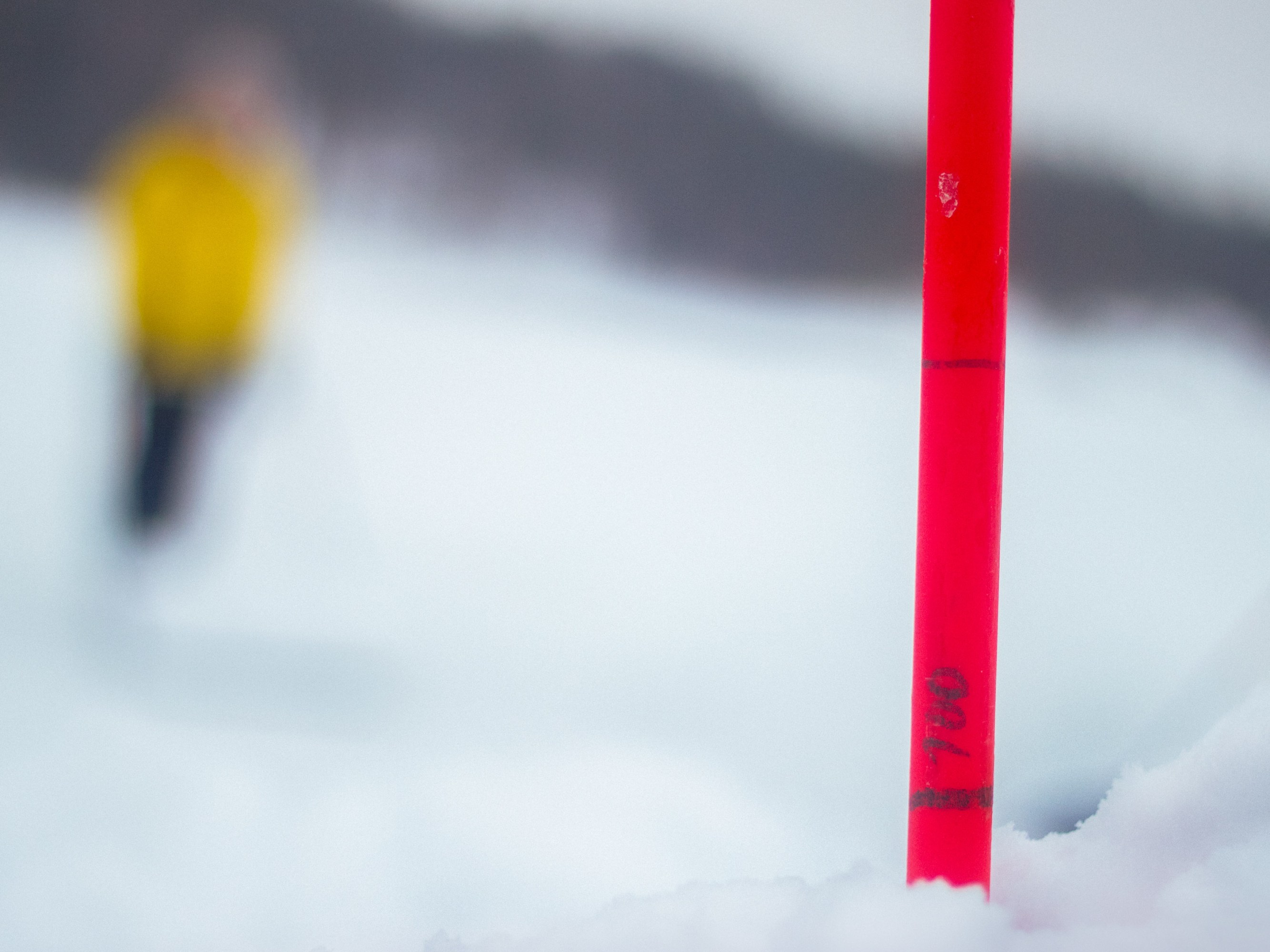
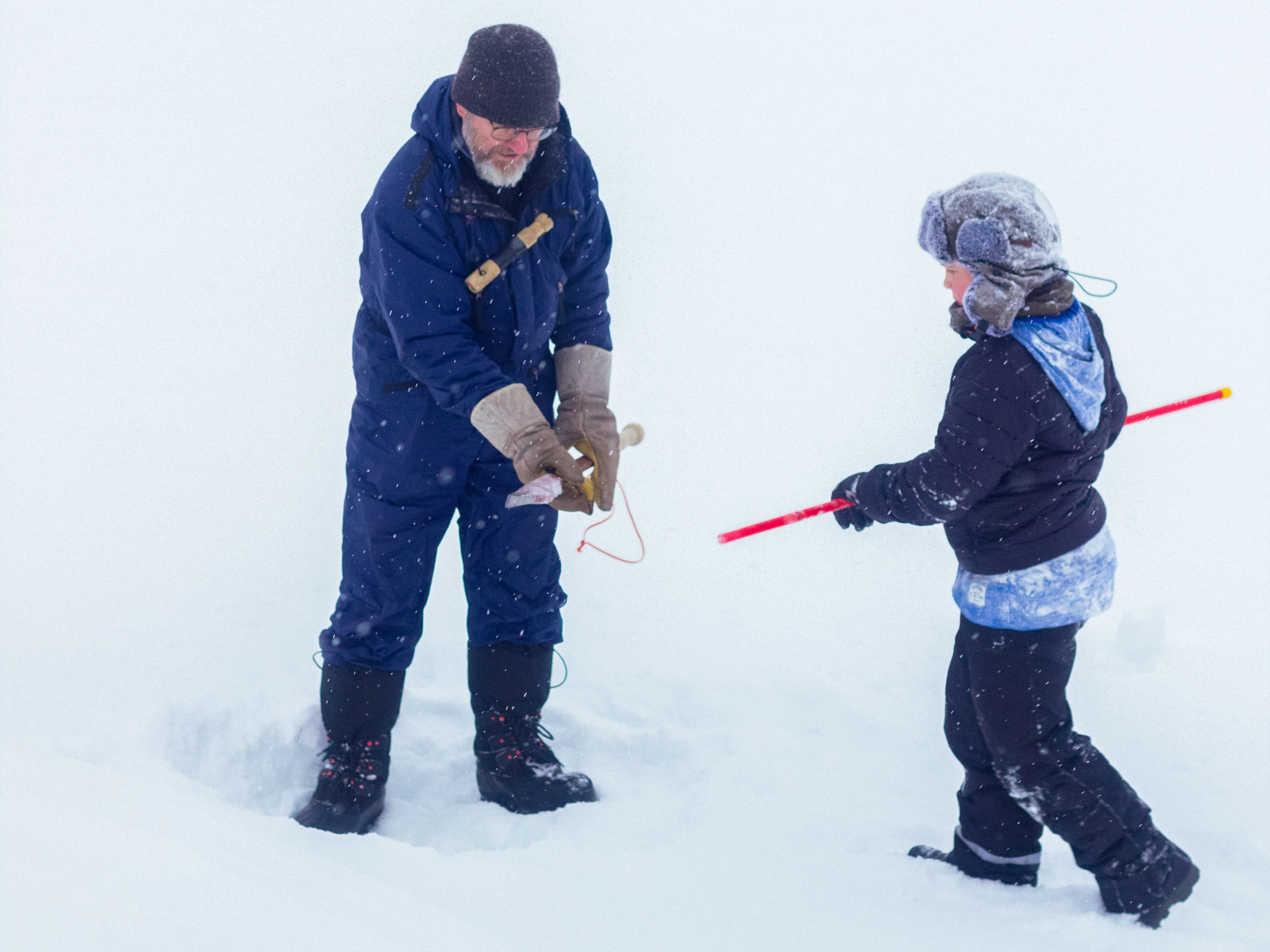
Volunteers pile up and compact layers of snow to build a meter-high snowbank.
This year, Ilmonen and his colleagues at Finland’s parks and wildlife agency have been watching since winter began for signs of trouble ahead. By December, an ice sheet typically covers the lake, and seals will use sharp claws on their front flippers to make a hole in the ice from the water below before carving out their den inside the snow piled above. A lack of snow or ice could spell the death of all the year’s pups.
As ice and snow arrive, the teams spring into action, joined by groups run by the charity World Wildlife Fund in southern parts of Lake Saimaa. All of today’s volunteers—including a nurse and yoga instructor—are constructing seal habitats for the first time. Their destinations are plotted on a map kept secret under Finnish law to protect these rare creatures. The first site is in a sheltered cove shadowed by rocks and trees on the north side of a small island, where the snowdrifts they make will be protected from melting through spring. On arrival, Ilmonen hammers a heavy metal spike called a tuura through the ice and uses a measuring stick to check that there is close to a meter of space for the seals to swim below.
Today, the levels are right, and he marks out an area for the snowdrift. Construction begins by driving loose snow into a bank about eight meters (26 feet) long and three meters wide. As snow piles up, Ilmonen stomps it down to form compact layers until it reaches a height of about a meter. If all goes to plan, fresh snowfall will add a further layer of cover.
Over the last decade, the locations, designs, and construction methods for anthropogenic snowdrifts have been developed by scientists from the University of Eastern Finland and the Finnish parks agency. Each year data is gathered by a seal census (some years with the help of camera traps that record seals’ preferences and the performance of their shelters), and the process is tweaked the following year. The first shelters were smaller, with loosely piled snow, explains ecologist Miina Auttila, who invented the artificial snowdrift for her PhD thesis in 2010, but “after the first winter, the drifts we had piled up had melted surprisingly quickly and the roofs of the lairs collapsed.” Pups left exposed can freeze or be eaten by foxes, wolves, lynx, or wolverines.
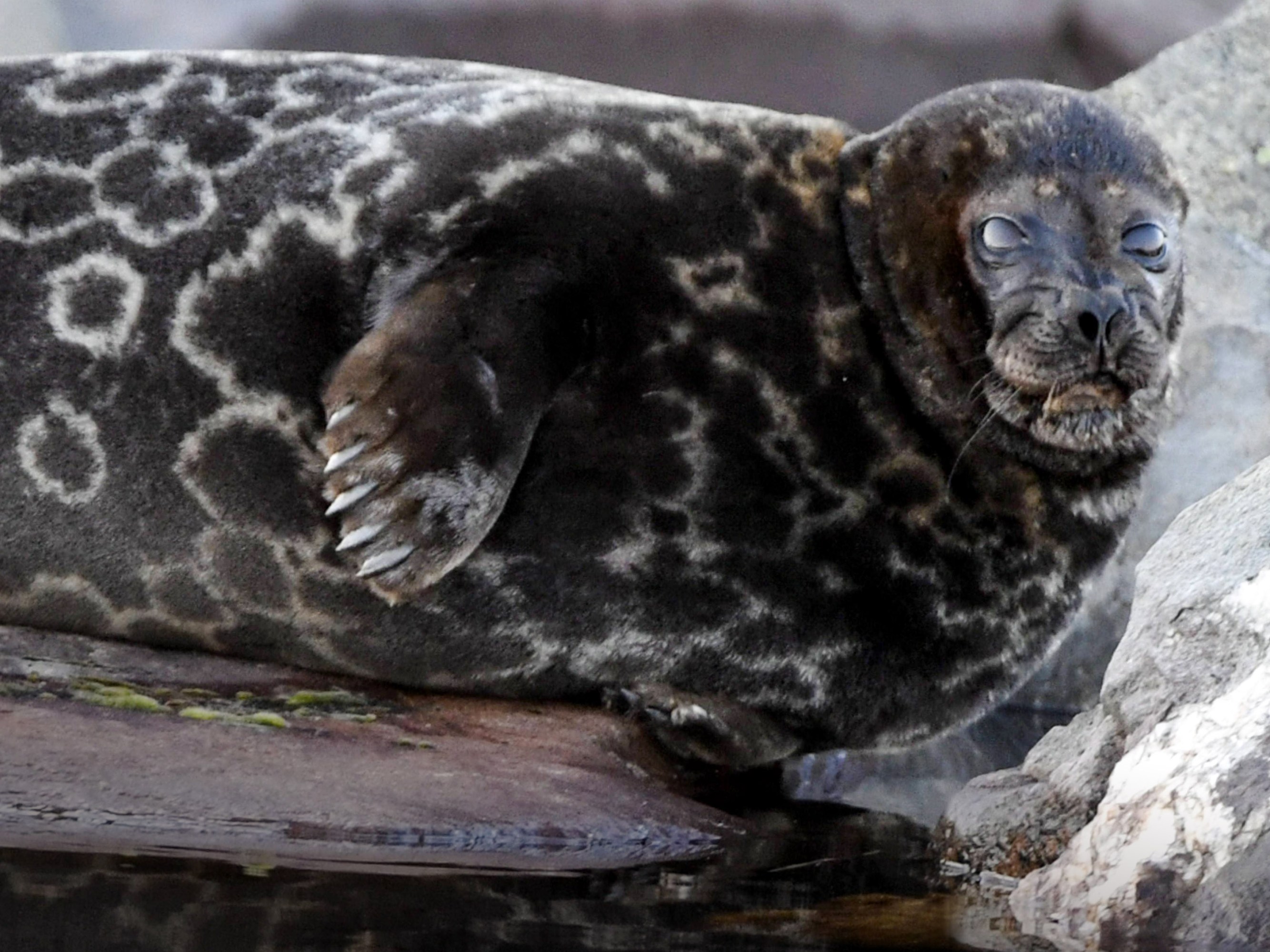
Stanislav Roudavski, founder of Deep Design Lab at the University of Melbourne, says this type of rigorous data gathering and iterative design is one way we can begin to treat other species as collaborators and “co-design” with them.
Environmental scientists and designers are envisioning more ways to support wild organisms through what’s sometimes called “interspecies” or “more-than-human” design, such as by producing artificial reefs or wildlife bridges. The shelters are one of many solutions meant to respond to specific populations’ conservation needs. Other examples include the grisly vulture restaurants in Nepal—enclosures where the scavenging birds are fed cattle carcasses free from the poisons that have decimated populations—and 3D-printed nesting boxes that Deep Design Lab has built for rare owls.
Whether this year’s snowdrifts have been used will not be known until spring, after the seals have departed and left visible holes where dens have been, along with white fluff from newborns. To date, three-quarters of the nearly 2,000 snowdrifts made by humans around Lake Saimaa have been used by seals, and in recent mild winters, those dens have housed 90% of seal pups.
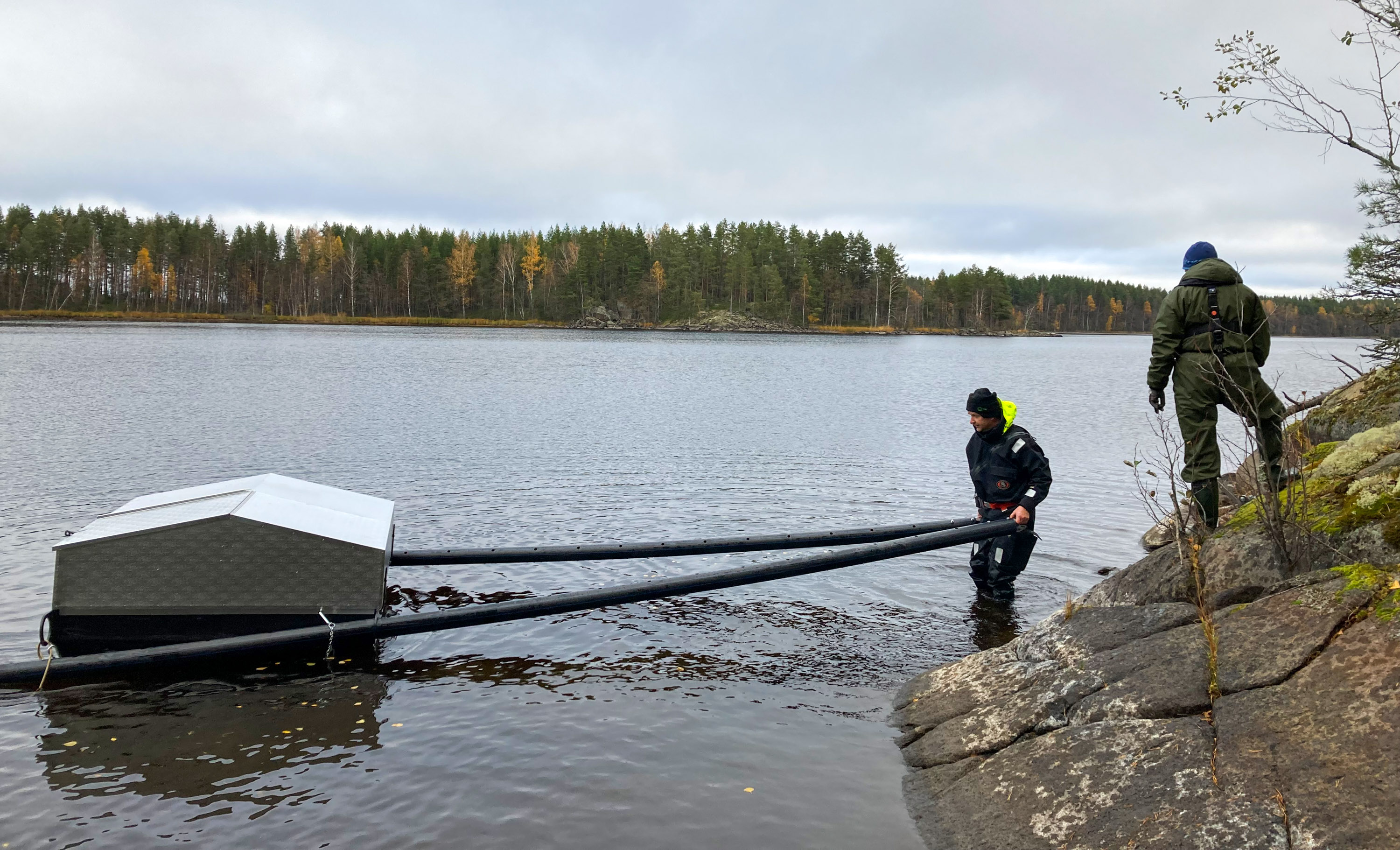
Since 2016, Auttila and researchers from the University of Eastern Finland have searched for a solution that will last through the years ahead, when climate models predict that Saimaa will no longer be covered by ice and snow each year. This year, 33 reusable floating artificial nest structures were deployed around Saimaa, using plastic tubes as floats and organic siding made of peat or willow, to provide the first artificial habitats for large, free-ranging wild mammals.
Wildlife cameras revealed five pups born in earlier prototypes of these shelters, which have meanwhile repelled foxes, raccoon dogs, and lynx. Yet seals still prefer snow if they can find it. The project aims to next produce a seal-safe shelter that is easy to transport by snowmobile. Most crucially, Auttila adds, “seals have to accept it.”
Matthew Ponsford is a freelance reporter based in London.
Deep Dive
Climate change and energy
The problem with plug-in hybrids? Their drivers.
Plug-in hybrids are often sold as a transition to EVs, but new data from Europe shows we’re still underestimating the emissions they produce.
Harvard has halted its long-planned atmospheric geoengineering experiment
The decision follows years of controversy and the departure of one of the program’s key researchers.
Decarbonizing production of energy is a quick win
Clean technologies, including carbon management platforms, enable the global energy industry to play a crucial role in the transition to net zero.
How thermal batteries are heating up energy storage
The systems, which can store clean energy as heat, were chosen by readers as the 11th Breakthrough Technology of 2024.
Stay connected
Get the latest updates from
MIT Technology Review
Discover special offers, top stories, upcoming events, and more.